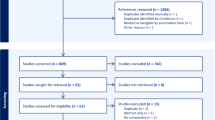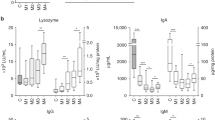Abstract
Objective:
Lactoferrin (Lf), the dominant protein in human milk (HM), has been shown to have anti-inflammatory and anti-microbial activity in the neonatal gut. Previous studies indicate that freezing significantly decreases the concentration of Lf in HM. The objective of our study was to compare the activity of Lf in fresh and frozen HM over time.
Study Design:
HM samples were examined fresh and after storage at −20 °C for 3 and 6 months. Lf concentration was determined by enzyme-linked immunoassay, and the activity was measured by examination of nitric oxide (NO) production and tumor necrosis factor-α secretion from rat macrophages exposed to HM samples.
Result:
After 3 and 6 months at −20 °C, the average decrease in Lf concentrations was 55% and 65%, respectively. The bioactivity of Lf also decreased significantly over 6 months.
Conclusion:
Freezing HM for 3 or more months significantly decreases Lf levels and activity. Periodically providing fresh HM may benefit vulnerable preterm neonates.
This is a preview of subscription content, access via your institution
Access options
Subscribe to this journal
Receive 12 print issues and online access
$259.00 per year
only $21.58 per issue
Buy this article
- Purchase on Springer Link
- Instant access to full article PDF
Prices may be subject to local taxes which are calculated during checkout



Similar content being viewed by others
References
Boghossian NS, Page GP, Bell EF, Stoll BJ, Murray JC, Cotten CM et al. Late-onset sepsis in very low birth weight infants from singleton and multiple-gestation births. J Pediatr 2013; 162: 1120–1124, 1124.e1.
Horbar JD, Carpenter JH, Badger GJ, Kenny MJ, Soll RF, Morrow KA et al. Mortality and neonatal morbidity among infants 501 to 1500 grams from 2000 to 2009. Pediatrics 2012; 129: 1019–1026.
Okuyama H, Urao M, Lee D, Abe A, Drongowski RA, Harmon CM et al. Changes, with age, in the phospholipid content of the intestinal mucus layer of the newborn rabbit. J Pediatr Surg 1998; 33: 35–38.
Gronlund MM, Arvilommi H, Kero P, Lehtonen OP, Isolauri E . Importance of intestinal colonisation in the maturation of humoral immunity in early infancy: a prospective follow up study of healthy infants aged 0–6 months. Arch Dis Child Fetal Neonatal Ed 2000; 83: F186–F192.
Coutinho HB, da Mota HC, Coutinho VB, Robalinho TI, Furtado AF, Walker E et al. Absence of lysozyme (muramidase) in the intestinal Paneth cells of newborn infants with necrotising enterocolitis. J Clin Pathol 1998; 51: 512–514.
Schanler RJ . Outcomes of human milk-fed premature infants. Semin Perinatol 2011; 35: 29–33.
Sullivan S, Schanler RJ, Kim JH, Patel AL, Trawoger R, Kiechl-Kohlendorfer U et al. An exclusively human milk-based diet is associated with a lower rate of necrotizing enterocolitis than a diet of human milk and bovine milk-based products. J Pediatr 2010; 156: 562–567, e1.
Lonnerdal B, Iyer S . Lactoferrin: molecular structure and biological function. Annu Rev Nutr 1995; 15: 93–110.
Ling JM, Schryvers AB . Perspectives on interactions between lactoferrin and bacteria. Biochem Cell Biol 2006; 84: 275–281.
Bullen JJ, Rogers HJ, Leigh L . Iron-binding proteins in milk and resistance to Escherichia coli infection in infants. BMJ 1972; 1: 69–75.
Kim JM, Eckmann L, Savidge TC, Lowe DC, Witthoft T, Kagnoff MF . Apoptosis of human intestinal epithelial cells after bacterial invasion. J Clin Invest 1998; 102: 1815–1823.
Valenti P, Greco R, Pitari G, Rossi P, Ajello M, Melino G et al. Apoptosis of Caco-2 intestinal cells invaded by Listeria monocytogenes: protective effect of lactoferrin. Exp Cell Res 1999; 250: 197–202.
Sherman MP, Petrak K . Lactoferrin-enhanced anoikis: a defense against neonatal necrotizing enterocolitis. Med Hypotheses 2005; 65: 478–482.
Cristofalo EA, Schanler RJ, Blanco CL, Sullivan S, Trawoeger R, Kiechl-Kohlendorfer U et al. Randomized trial of exclusive human milk versus preterm formula diets in extremely premature infants. J Pediatr 2013; 163: 1592–1595 e1.
Evans TJ, Ryley HC, Neale LM, Dodge JA, Lewarne VM . Effect of storage and heat on antimicrobial proteins in human milk. Arch Dis Child 1978; 53: 239–241.
Manzoni P, Rinaldi M, Cattani S, Pugni L, Romeo MG, Messner H et al. Bovine lactoferrin supplementation for prevention of late-onset sepsis in very low-birth-weight neonates: a randomized trial. JAMA 2009; 302: 1421–1428.
Hanna N, Ahmed K, Anwar M, Petrova A, Hiatt M, Hegyi T . Effect of storage on breast milk antioxidant activity. Arch Dis Child Fetal Neonatal Ed 2004; 89: F518–F520.
Singh PK, Tack BF, McCray PB Jr, Welsh MJ . Synergistic and additive killing by antimicrobial factors found in human airway surface liquid. Am J Physiol Lung Cell Mol Physiol 2000; 279: L799–L805.
Rollo DE, Radmacher PG, Turcu RM, Myers SR, Adamkin DH . Stability of lactoferrin in stored human milk. J Perinatol 2014; 34: 284–286.
Edde L, Hipolito RB, Hwang FF, Headon DR, Shalwitz RA, Sherman MP . Lactoferrin protects neonatal rats from gut-related systemic infection. Am J Physiol Gastrointest Liver Physiol 2001; 281: G1140–G1150.
Edde L, Zhou X, Eaton JW, Sherman MP . Induction of nitric oxide synthase in macrophages: inhibition by fructose-1,6-diphosphate. Biochem Biophys Res Commun 1998; 243: 683–687.
Venkatesh M, Abrams S . Can lactoferrin prevent neonatal sepsis and necrotizing enterocolitis? Expert Rev Anti Infect Ther 2009; 7: 515–525.
Lonnerdal B . Bioactive proteins in human milk: mechanisms of action. J Pediatr 2010; 156: S26–S30.
Manzoni P, Meyer M, Stolfi I, Rinaldi M, Cattani S, Pugni L et al. Bovine lactoferrin supplementation for prevention of necrotizing enterocolitis in very-low-birth-weight neonates: a randomized clinical trial. Early Hum Dev 2014; 90 (Suppl 1): S60–S65.
Acknowledgements
This work was supported by the University of Louisville Department of Pediatrics Fellow Research Grant.
Author information
Authors and Affiliations
Corresponding author
Ethics declarations
Competing interests
The authors declare no conflict of interest.
Rights and permissions
About this article
Cite this article
Raoof, N., Adamkin, D., Radmacher, P. et al. Comparison of lactoferrin activity in fresh and stored human milk. J Perinatol 36, 207–209 (2016). https://doi.org/10.1038/jp.2015.186
Received:
Revised:
Accepted:
Published:
Issue Date:
DOI: https://doi.org/10.1038/jp.2015.186



